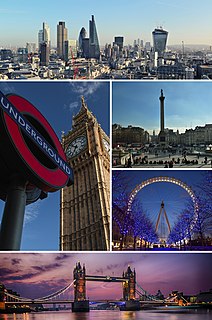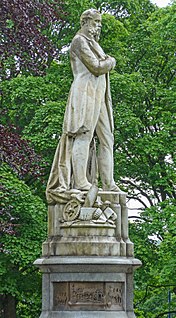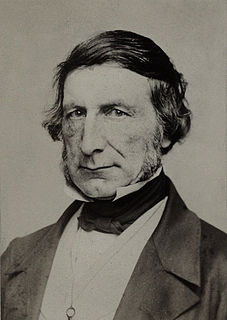There have been five baronetcies created for persons with the surname Richardson, one in the Baronetage of Nova Scotia, one in the Baronetage of Ireland and three in the Baronetage of the United Kingdom.
Contents
- Richardson baronets, of Pencaithland (1630)
- Richardson baronets, of Augher (1787)
- Richardson baronets, of Yellow Woods (1924)
- Richardson baronets, of Weybridge (1929)
- Richardson baronets, of Eccleshall (1963)
- References
The Richardson Baronetcy, of Pencaithland in the County of Haddington, was created in the Baronetage of Nova Scotia on 13 November 1630. For more information on this creation, see Stewart-Richardson baronets.
The Richardson, later Stewart-Richardson Baronetcy, of Pencaitland in the County of Haddington, is a title in the Baronetage of Nova Scotia. It was created on 13 November 1630 for Robert Richardson, with remainder to his heirs male whatsoever. The title was dormant from c. 1640–c. 1678, 1752–c. 1783 and 1821–1837. The thirteenth Baronet was the son of Elizabeth, eldest daughter and co-heir of James Stewart, and assumed the additional surname of Stewart.
The Richardson Baronetcy, of Augher in the County of Tyrone, was created in the Baronetage of Ireland on 30 August 1787. For more information on this creation, see Richardson-Bunbury baronets.
The Richardson, later Richardson-Bunbury Baronetcy, of Augher in the County of Tyrone, is a title in the Baronetage of Ireland. It was created on 30 August 1787 for William Richardson. The family is originally of Scottish descent. The second Baronet assumed in 1822 his aunt's surname of Bunbury.
The Richardson Baronetcy, of Yellow Woods in the Province of the Cape of Good Hope in South Africa, was created in the Baronetage of the United Kingdom on 26 January 1924 for Lewis Richardson. He was head of the firm of L. Richardson & Co, of Port Elizabeth, London, New York and Boston.

Port Elizabeth or The Bay is one of the major cities in South Africa; it is situated in the Eastern Cape Province, 770 km (478 mi) east of Cape Town. The city, often shortened to PE and nicknamed "The Windy City", stretches for 16 km along Algoa Bay, and is one of the major seaports in South Africa. Port Elizabeth is the southernmost large city on the African continent, just farther south than Cape Town. Port Elizabeth was founded as a town in 1820 to house British settlers as a way of strengthening the border region between the Cape Colony and the Xhosa. It now forms part of the Nelson Mandela Bay Metropolitan Municipality, which has a population of over 1.3 million.

London is the capital and largest city of both England and the United Kingdom. Standing on the River Thames in the south-east of England, at the head of its 50-mile (80 km) estuary leading to the North Sea, London has been a major settlement for two millennia. Londinium was founded by the Romans. The City of London, London's ancient core − an area of just 1.12 square miles (2.9 km2) and colloquially known as the Square Mile − retains boundaries that follow closely its medieval limits. The City of Westminster is also an Inner London borough holding city status. Greater London is governed by the Mayor of London and the London Assembly.

The City of New York, often called New York City (NYC) or simply New York (NY), is the most populous city in the United States. With an estimated 2017 population of 8,622,698 distributed over a land area of about 302.6 square miles (784 km2), New York City is also the most densely populated major city in the United States. Located at the southern tip of the state of New York, the city is the center of the New York metropolitan area, the largest metropolitan area in the world by urban landmass and one of the world's most populous megacities, with an estimated 20,320,876 people in its 2017 Metropolitan Statistical Area and 23,876,155 residents in its Combined Statistical Area. A global power city, New York City has been described as the cultural, financial, and media capital of the world, and exerts a significant impact upon commerce, entertainment, research, technology, education, politics, tourism, art, fashion, and sports. The city's fast pace has inspired the term New York minute. Home to the headquarters of the United Nations, New York is an important center for international diplomacy.
The Richardson Baronetcy, of Weybridge in the County of Surrey, was created in the Baronetage of the United Kingdom on 26 July 1929 for the sports shooter and Conservative politician Philip Richardson. The title became extinct on the death of the third Baronet in 1981.

Shooting sports is a collective group of competitive and recreational sporting activities involving proficiency tests of accuracy, precision and speed in shooting, using various types of ranged weapons, mainly referring to man-portable guns and bows/crossbows.

The Conservative Party, officially the Conservative and Unionist Party, is a centre-right political party in the United Kingdom. It is currently the governing party, having been so since the 2010 general election, where a coalition government with the Liberal Democrats was formed. In 2015, the Conservatives led by David Cameron won a surprise majority and formed the first majority Conservative government since 1992. However, the snap election on 8 June 2017 resulted in a hung parliament, and the party lost its parliamentary majority. It is reliant on the support of a Northern Irish political party, the Democratic Unionist Party (DUP), in order to command a majority in the House of Commons through a confidence-and-supply deal. The party leader, Theresa May, has served as both Leader of the Conservative Party and Prime Minister since July 2016. It is the largest party in local government with 9,008 councillors. The Conservative Party is one of the two major contemporary political parties in the United Kingdom, the other being its modern rival, the Labour Party.
Sir Philip Wigham Richardson, OBE, 1st Baronet was a British sport shooter and Conservative politician.
The Richardson Baronetcy, of Eccleshall in the County of York, was created in the Baronetage of the United Kingdom on 20 November 1963 for the prominent physician John Samuel Richardson. In 1979 he was created a life peer as Baron Richardson, of Lee in the County of Devon, in the Peerage of the United Kingdom. Both titles became extinct on his death in 2004.
In the United Kingdom, life peers are appointed members of the peerage whose titles cannot be inherited, in contrast to hereditary peers. In modern times, life peerages, always created at the rank of baron, are created under the Life Peerages Act 1958 and entitle the holders to seats in the House of Lords, presuming they meet qualifications such as age and citizenship. The legitimate children of a life peer are entitled to style themselves with the prefix "The Honourable", although they cannot inherit the peerage itself.
The Peerage of the United Kingdom comprises most peerages created in the United Kingdom of Great Britain and Ireland after the Acts of Union in 1801, when it replaced the Peerage of Great Britain. New peers continued to be created in the Peerage of Ireland until 1898.








